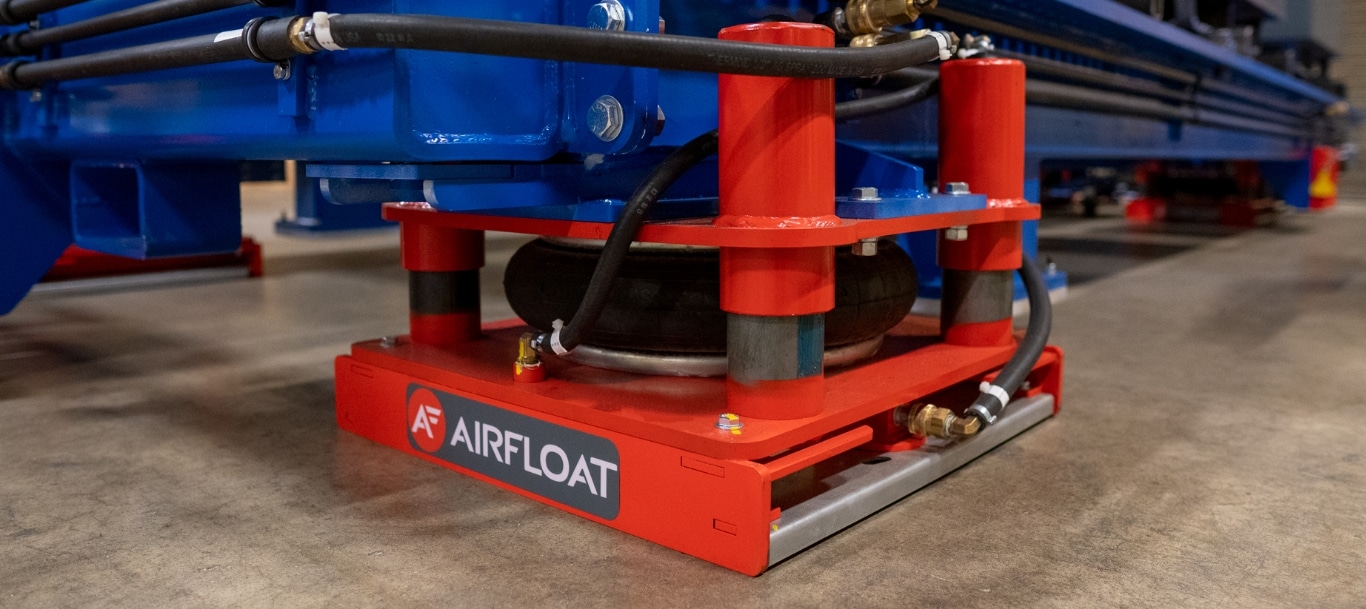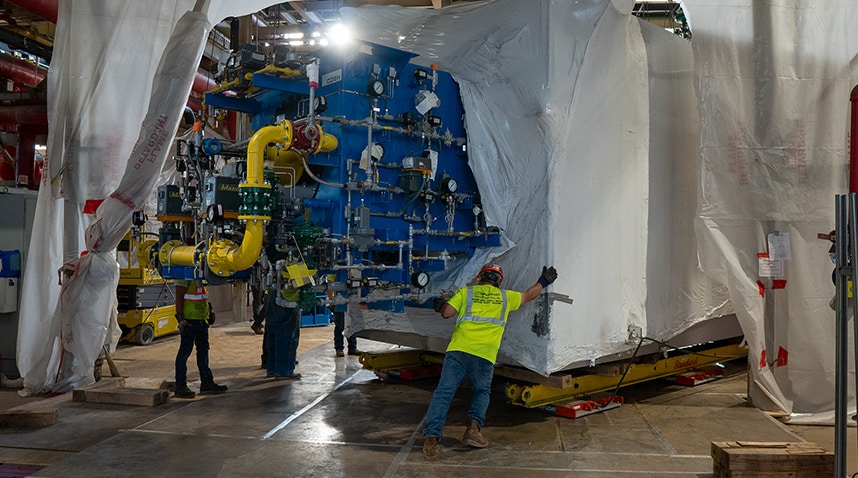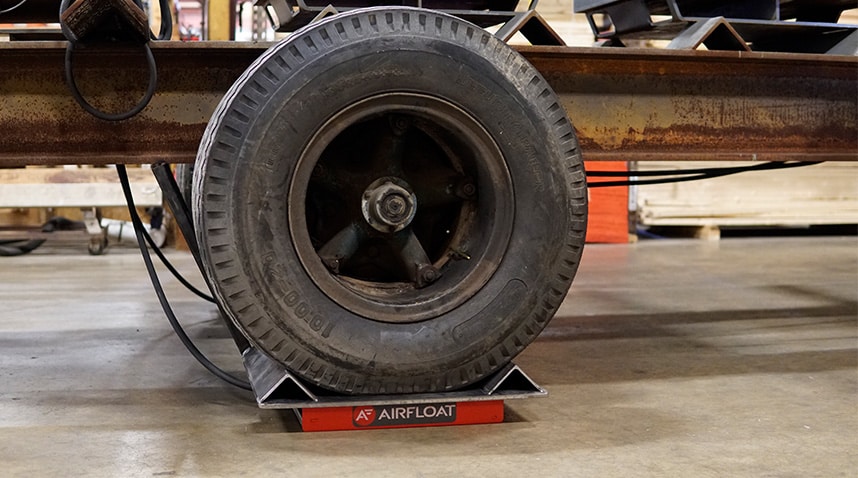From Aerospace to Industry: Why Lift Glide Air Skids Are Essential

What Are Lift Glides?
In today’s industrial environments, efficiency, precision, and safety are essential, and the equipment used for material handling is vital in achieving these objectives. One piece of equipment that has helped so many companies is the Lift Glide Air Skid. The Lift Glides have transformed the way facilities move heavy loads, offering numerous advantages when added to a wheeled cart or structural tooling. Here’s an overview of what Lift Glides are and why they have become essential in various industries.
Lift Glide Air Skids are specially designed modules equipped with both a lift spring and air bearings. They provide users with the flexibility to move loads on their wheeled carts when needed and then transition to air bearings for more precise movement. The system uses a retractable spring, allowing the wheels to lift off the floor when the air springs are activated. Then, air bearings can be used, making moving loads easy.
This system offers omnidirectional movement capability, allowing users to move heavy objects smoothly and with minimal effort. A notable feature of Lift Glides is the air spring that allows for a stroke elevation of up to 2 inches, lifting the wheels off the ground and allowing the load to glide on air bearings.
Key Benefits of Lift Glide Air Skids
- Load Movement with Flexibility
The lift glide attaches to the operator’s existing wheeled cart, and then the air spring and air bearings are activated to move the heavy load. This dual functionality is invaluable in industries like aerospace, where large, heavy components such as wing sections need to be moved and positioned accurately. - Omnidirectional Motion
One of the greatest advantages of Lift Glides is their omnidirectional movement. When air bearings are activated, loads can be moved in any direction. This is especially beneficial in tight spaces or when fine-tuning the placement of a load. - Reduced Floor Strain
Lift Glides, like other air-bearing equipment, distribute the load over a larger surface area compared to wheels. This reduces strain on flooring, making them ideal for facilities with sensitive or expensive flooring materials. - Adaptability to Various Load Sizes
Whether it’s a single cart or a large platform, Lift Glides can be customized for various load sizes. While most systems use a minimum of three Lift Glides, larger platforms can utilize up to eight, ensuring safe and stable movement for even the heaviest of loads. - Durability and Low Maintenance
Lift Glides require minimal maintenance. Air bearings are the only major wear item, and with proper care, air bearings can last decades. With proper flooring conditions, Lift Glide systems can operate efficiently for years. The air springs, a crucial component of the system, are also built to last, with some known to function effectively for decades. - Easy Integration with Existing Systems
Many industries already using wheeled carts can easily integrate Lift Glides into their processes. For instance, aerospace has implemented Lift Glides to move large fuselages across facilities. The ability to switch between wheeled movement and air bearings without altering the existing infrastructure makes Lift Glides a flexible choice.
Applications of Lift Glide Air Skids
Lift Glides are particularly popular in industries that require both mobility with wheeled carts and moving a heavy load. Some of the most common applications include:
- Aerospace Manufacturing: Moving large and delicate parts like wings or fuselage sections with high precision.
- Automotive Manufacturing: Handling heavy machinery and components in tight assembly lines.
- Heavy Industry: Transporting large equipment or structural components across large manufacturing floors.
Conclusion
Lift Glide Air Skids represent a significant leap forward in material handling technology. By offering precision, flexibility, and durability, they provide an excellent solution for industries that require the ability to move heavy loads over long distances while maintaining the ability to position them with accuracy. Their low-maintenance nature and the reduced strain on facility flooring make them a cost-effective and great choice for modern industrial environments.



















